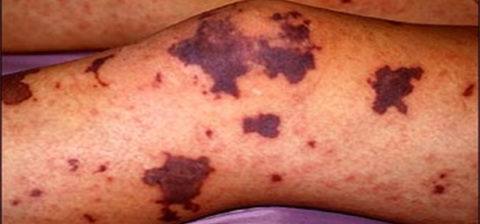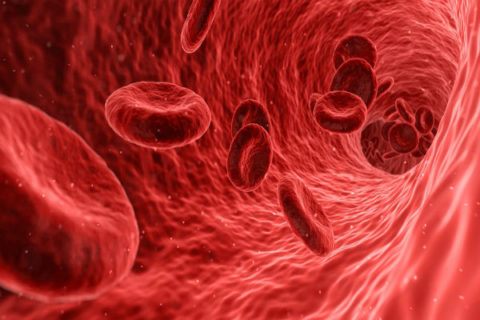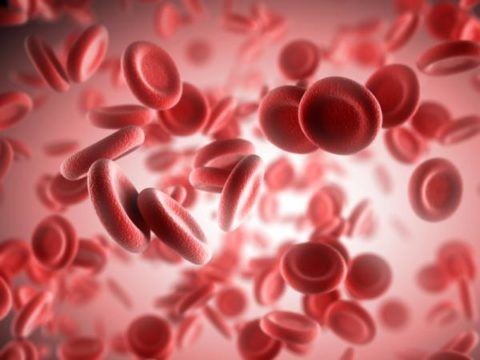The Purple disease | causes, symptoms and treatment
Purple disease or primary immune thrombocytopenia is a hemorrhagic disease of autoimmune origin. In these types of diseases, the immune system attacks the body's own cells, as in lupus or in people suffering from psoriasis or celiac disease.
What is the purple disease?
Also known as purple anaphylactoid or purple Shönlein-Henoch is a disease of the skin and other organs that usually affects children especially . It is a disease of autoimmune character. At present, it is no longer called a purple disease but primary immune thrombocytopenia. This disease is not transmitted from one person to another.

What happens in this disease?
Purple disease or primary immune thrombocytopenia is a coagulation disorder. In this disease the blood does not clot as it should, this is due to a low number of fragments of blood cells called platelets or thrombocytes.
Platelets are They form in the bone marrow next to another type of blood cells. Their job is to seal small wounds or cuts that may arise in the blood vessels to stop bleeding. When we do not have enough platelets bleeding can occur either inside the body or in subcutaneous f orma below the skin.
This will form thrombocytopenia which means there is less than the normal amount of platelets in the blood that results in the appearance of purple bruises caused by bleeding under the skin and hence the disease gets that name " purple ".
How purple disease manifests
Patients with purple
disease strong> often have bruises that appear on the skin or mucous membranes (for example, the mouth). The bruises indicate that the bleeding occurred in small blood vessels under the skin.A person suffering from idiopathic thrombocytopenia may also have a hemorrhage that is shown through small red or purple spots on the skin, called petechiae, which can appear as a rash.
Purple disease can cause nosebleeds , bleeding gums or other hemorrhages that are difficult to stop. Women who have this disease may have menstrual bleeding more abundant than normal.
A larger hemorrhage may cause bruising , that is, a accumulation of coagulated or partially clotted blood under the skin. Bleeding in the brain is very rare, but it can be life threatening if it occurs.
The causes of the disease purple
There is no specific cause for this disease but we can point out two that are major.

Autoimmune disease
It has been said of this disease that it is of idiopathic or unknown origin, but it What is known by studies is that 60% of cases are autoimmune origin, in this case the antibodies fight against the proteins of the platelet membrane.
Normally, the immune system helps the body fight infections and diseases. But with the purple disease, the immune system attacks and destroys platelets.Also due to diseases such as lupus or HIV. What is known, however, is that it is not a contagious or even a hereditary disease .
Symptoms of the purple disease
Patients with this disease may experience the aforementioned bruises, anemia and excessive bleeding. In addition, a series of characteristic symptoms of this disease.

- Renal impairment
- Fever
- Thrombocytopenia (low platelet count) that results in purple bruising.
- Microangiopathic hemolytic , anemia
- Bleeding from the mucous membranes
- Defects in the coagulation of the blood
- Moratones
- Skin rashes
Among the complications that this disease can have
Platelet counts below 5000, subarachnoid hemorrhage, intracerebal hemorrhage. Fortunately none of these complications usually appear in patients with counts above 20,000
But in turn, the purple disease leaves many doors open for other diseases that the patient can get, such as hepatitis B and up to AIDS . It is very possible that you will have a very strong treatment, but it is also important that the patient resists it in order to be saved from this rare disease.
Treatments for purple disease
At the onset of signs and symptoms, it is advisable to contact the doctor who, thanks to a series of analysis and exams , will establish the diagnosis and, therefore, the therapy more appropriate according to the specific case. In addition to the medical examination, the study of symptoms and the analysis of blood, other tests , such as biopsy, may also be necessary.

The treatment is reserved for more severe cases with significant bleeding. Among the treatments used are.
Treatment of the underlying cause of thrombocytopenia
If the doctor You can identify a condition or medication that is causing your thrombocytopenia, addressing that cause may clear up the purple disease.
For example, if you have heparin-induced thrombocytopenia, the doctor will say stop using heparin and will prescribe a different anticoagulant. Thrombocytopenia can persist for a week or longer despite stopping all heparin therapy.
Blood or platelet transfusions
If the platelet level is too low, the doctor can replace the lost blood with red blood cell or platelet transfusions.
Medications
If the condition is related to a problem with the immune system, the doctor may prescribe medications to increase the platelet count . The drug of first choice can be a corticosteroid.Contact sports, such as boxing , martial arts and football, carry a high risk of injury.
Drink alcohol with moderation
Alcohol d reduces the production of platelets in your body. You should always ask the doctor if it is okay to drink alcohol.
Beware of over-the-counter medications
Over-the-counter pain relievers such as aspirin and ibuprofen (Advil, Motrin IB, others) may affect platelet function.
Finally, the prognosis depends on the cause that led to the presence of the disorder, the timeliness of the intervention and the severity of the condition, as well as the patient's health status and age.
Article of interest:


